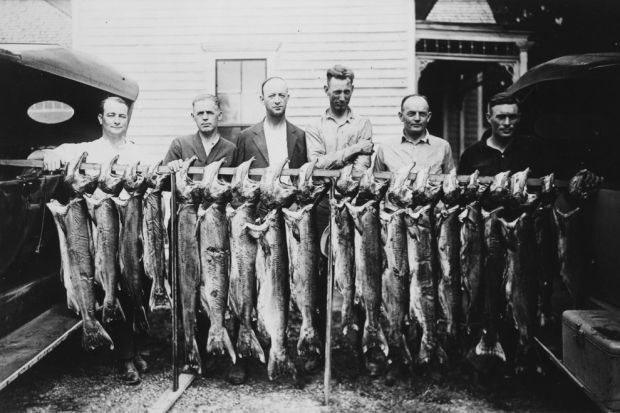forum
library
tutorial
contact

Latest BiOp Litigation Slips into Gear
by Bill RudolphNW Fishletter, July 24, 2014
|
the film forum library tutorial contact |

|
Latest BiOp Litigation Slips into Gearby Bill RudolphNW Fishletter, July 24, 2014 |
 On July 9, BiOp plaintiffs filed their seventh supplemental complaint in the U.S. District Court for the District of Oregon that calls for judicial review of all the hydro BiOps back to 2009.
On July 9, BiOp plaintiffs filed their seventh supplemental complaint in the U.S. District Court for the District of Oregon that calls for judicial review of all the hydro BiOps back to 2009.
The filing contains no surprises, and is essentially the same document included in their filing last month for a motion for leave to file the supplemental complaint, but it was in the "proposed" category at that point.
The latest complaint in the case, which dates back to 2001 [CV-01-0640] reiterates what it found wrong in previous BiOps, including reliance on speculative benefits from habitat restoration, and an "illegal" jeopardy standard the feds cobbled together in previous BiOps, but never declared illegal by any previous rulings.
The plaintiffs argue that federal agencies should not have dissed the Comparative Survival Study (CSS) spill proposal that proponents -- including the state of Oregon -- say could help ESA-listed stocks reach recovery-level smolt-to-adult returns. But the expensive proposal ($110 million a year for 10 years) has already flunked an independent review and was not added to the latest draft revision of the region's F&W program.
The complaint also argues that until NOAA completes consultations over Columbia Basin hatchery programs, "it must incorporate the ongoing impacts of existing hatchery operations, including any negative impacts, in its analysis ... describing hatchery studies, many of which conclude that many current hatchery practices negatively affect the productivity of wild populations." The plaintiffs say NOAA has only completed 11 consultations, with dozens more to do.
The plaintiffs also say the latest BiOp uses a NOAA analysis that fails to consider "what number and quality of fish would be needed from the Columbia River basin" to ensure survival and recovery of the ESA-listed southern resident killer whale population that sometimes wanders down from Puget Sound to the mouth of the Columbia to feed during the winter.
The 2014 BiOp should have also included an updated EIS, said the plaintiffs, because much new information has been collected since 2004, when the last EIS documents were cited in Action Agency records of decision.
"For example," says their filing, "there has been significant new information regarding the impacts of climate change on the Columbia River basin and spill levels on salmon and steelhead survival to mention only two. New species of salmon and steelhead have been listed as threatened or endangered, over 10,000 megawatts of new power generation has been added to the grid in the past decade, and the value of navigation on the Snake River has declined significantly. None of this significant new information and much more, or the substantial changes in the environmental context and circumstances of FCRPS operations, were considered in any of the EISs or other NEPA documents referenced in the Corps' and BOR's RODs."
The complaint was filed by the Institute for Fisheries Resources, Idaho Wildlife Federation, National Wildlife Federation, Sierra Club, NW Energy Coalition, Federation of Fly Fishers, Pacific Coast Federation of Fishermen's Associations, Salmon for All, American Rivers, Washington Wildlife Federation, Northwest Sport Fishing Industry Association, Idaho Rivers United, and Columbia Riverkeeper.
learn more on topics covered in the film
see the video
read the script
learn the songs
discussion forum
